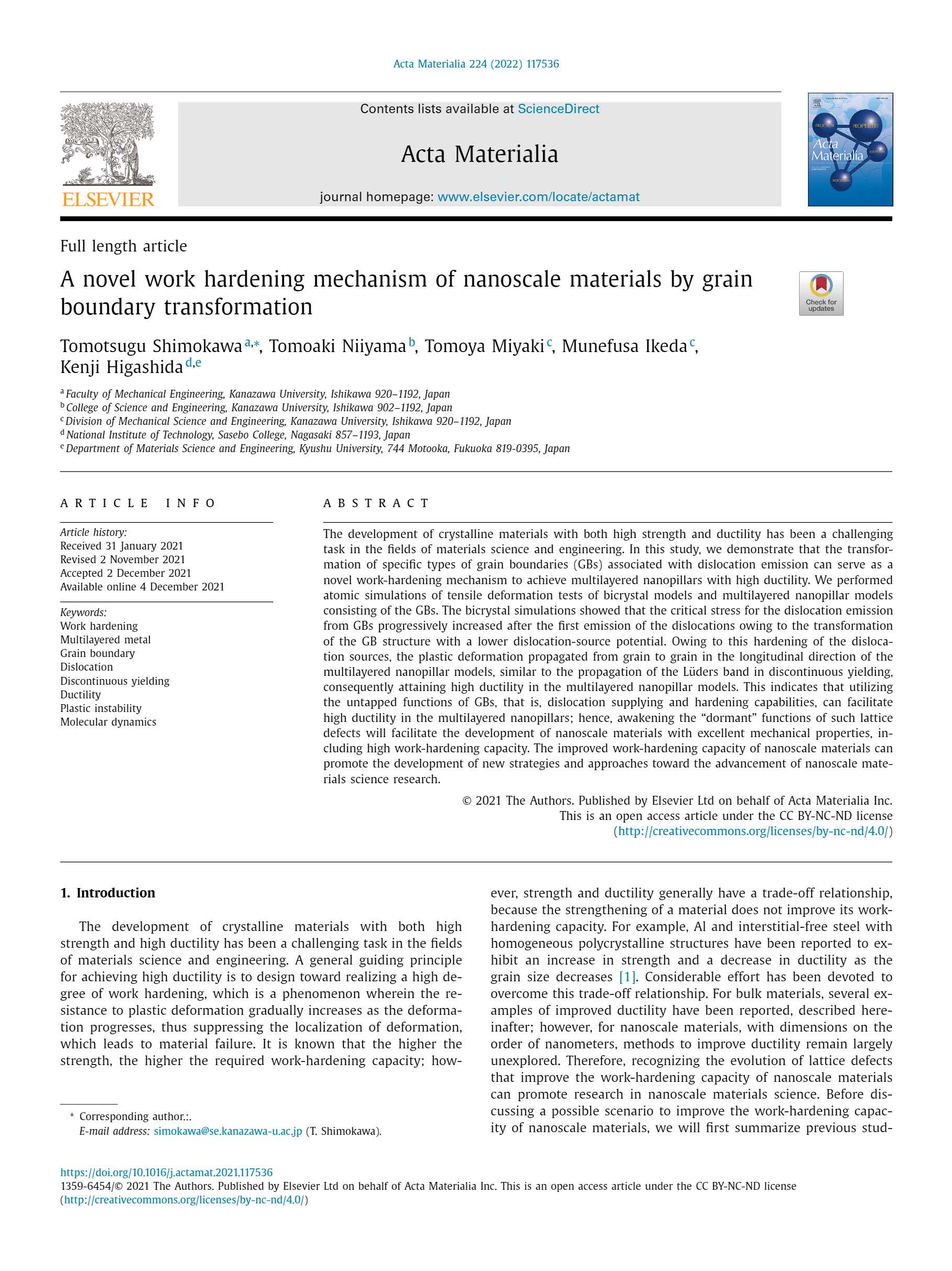A novel work hardening mechanism of nanoscale materials by grain boundary transformation
Acta Materialia, 224(2022), 117536. DOI:10.1016/j.actamat.2021.117536研究論文概要
The development of crystalline materials with both high strength and ductility has been a challenging task in the fields of materials science and engineering. In this study, we demonstrate that the transformation of specific types of grain boundaries (GBs) associated with dislocation emission can serve as a novel work-hardening mechanism to achieve multilayered nanopillars with high ductility. We performed atomic simulations of tensile deformation tests of bicrystal models and multilayered nanopillar models consisting of the GBs. The bicrystal simulations showed that the critical stress for the dislocation emission from GBs progressively increased after the first emission of the dislocations owing to the transformation of the GB structure with a lower dislocation-source potential. Owing to this hardening of the dislocation sources, the plastic deformation propagated from grain to grain in the longitudinal direction of the multilayered nanopillar models, similar to the propagation of the Lüders band in discontinuous yielding, consequently attaining high ductility in the multilayered nanopillar models. This indicates that utilizing the untapped functions of GBs, that is, dislocation supplying and hardening capabilities, can facilitate high ductility in the multilayered nanopillars; hence, awakening the “dormant” functions of such lattice defects will facilitate the development of nanoscale materials with excellent mechanical properties, including high work-hardening capacity. The improved work-hardening capacity of nanoscale materials can promote the development of new strategies and approaches toward the advancement of nanoscale materials science research.
